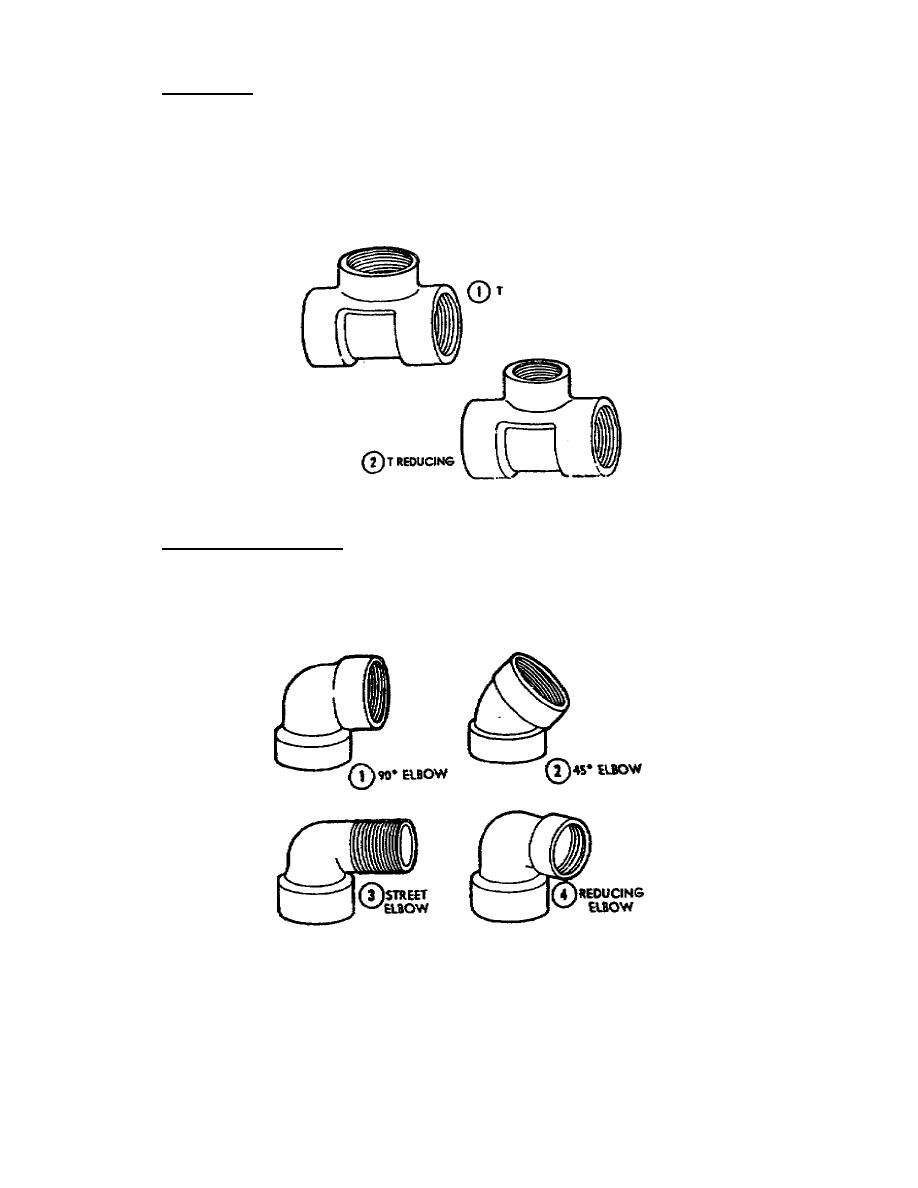
c. T's (tees). When the three outlets of a T are the same size, the fitting
is specified by that size; for example, a 1-inch T (1, fig 2). When the outlets
are not the same size, the fitting is called a reducing T (2, fig 2) and is
specified by giving the straight through (run) dimensions followed by the bide
opening (branch) dimensions. Thus, a T with run outlets of 2 inches and a branch
outlet of 1 inch is known as a 2 by 1 T; one with run outlets of 2 inches and 1
inch, respectively, and a branch outlet of 3/4 inch, as a 2 x 1 x 3/4 T. T's are
also made with a run or branch outlet with male threads and with two branch outlets
at right angles to each other (four-way T).
Figure 2.
Iron pipe T's.
d. Elbows (L's or ells). Ells are used to change the direction of a
pipeline. They, like T's, are made in a large variety of sizes and patterns. The
most common types are the 90 ell (1, fig 3); 45 ell (2, fig 3); street ell (3,
fig 3), which has a male thread on one end and is also made in angles other than
the one illustrated; and the reducing ell (4, fig 3), which has outlets of
different sizes.
Figure 3.
Iron pipe elbows.
55



 Previous Page
Previous Page
